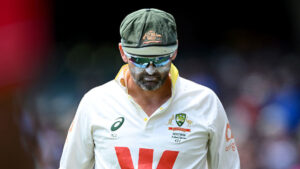
The media landscape erupted following Erin Patterson’s guilty verdict in a high-profile mushroom poisoning case, marking the end of a ten-week trial that had captivated the nation. With the verdict delivered on Monday, media outlets were no longer constrained by court reporting restrictions, leading to a surge in coverage and commentary.
Photographs of Patterson, a convicted triple murderer, were disseminated widely, with some outlets paying over $1,500 per image from the AFP wire agency. These images, alongside trial exhibits such as footage of the infamous “deadly beef wellington,” became focal points in the media’s portrayal of the case.
The Media’s Reaction and Analysis
The trial has prompted an extraordinary amount of media commentary, with various outlets offering their unique takes on the case. The Australian newspaper illustrated its coverage with psychedelic-style graphics, reflecting the surreal nature of the trial. John Ferguson, associate editor, described Patterson as “cold, mean, and vicious,” while Claire Harvey critiqued the prosecution’s approach by highlighting what she saw as an overlooked motive of “domestic violence coercive control.”
“The fact this crime was committed by a woman, and involved poison, and not a gun or a knife, has confused what should be crystal clear – and should have been a motive clearly presented to the jury,” Harvey wrote.
Meanwhile, the Daily Mail published a first-person account by veteran crime reporter Wayne Flower, who depicted the trial’s grueling nature and its impact on his personal life. His narrative, rich with vivid descriptions of Morwell’s challenges, was both a testament to the trial’s intensity and a reflection of the personal toll it took on those covering it.
Local and International Attention
Liam Durkin, the 30-year-old editor of the Latrobe Valley Express, found himself at the center of international media attention as the trial unfolded near his office. Running a small local newspaper, Durkin and his team of four were thrust into the spotlight, providing coverage and support to visiting journalists.
“To be on the ground with journalists who are the best in the business was a great learning experience,” Durkin told Weekly Beast. His involvement extended beyond reporting, as he became a sought-after interviewee for outlets like BBC News and national television.
ABC’s Restructuring and New Ventures
In a separate development, the ABC faced internal challenges as it sought feedback on restructuring plans that could lead to around 40 redundancies. Staff expressed concerns about transparency, and some were surprised by the swift responses they received, suspecting the use of AI in crafting replies.
“Using AI for work in general is fine, but it is galling and disrespectful to be using AI to automate responses to a staff-listening exercise that’s intended to address staff concerns about management’s failure to listen,” one staffer commented.
Coinciding with these internal issues, the ABC announced a new show blending true crime and comedy, titled Crime Night! Despite the timing, coming shortly after the Patterson verdict, the ABC remains optimistic about the show’s potential, drawing on Australia’s fascination with true crime narratives.
The Intersection of Crime and Fashion
Elsewhere, media outlets like the Courier-Mail and the Daily Telegraph have combined court reporting with fashion commentary, creating a unique blend of news coverage. These features highlight defendants’ courtroom attire, adding a layer of intrigue to traditional crime reporting.
In one instance, a Brisbane outlet featured a piece on courtroom fashion, asking “who wore it best?” and detailing the stylish choices of those appearing in court. This approach has sparked interest and debate, illustrating the diverse ways media can engage audiences.
As the dust settles on Erin Patterson’s trial, the media’s response underscores the case’s complexity and the varied ways it has been interpreted and reported. From local newspapers to national broadcasters, the coverage reflects a broader conversation about crime, justice, and media ethics in contemporary society.







